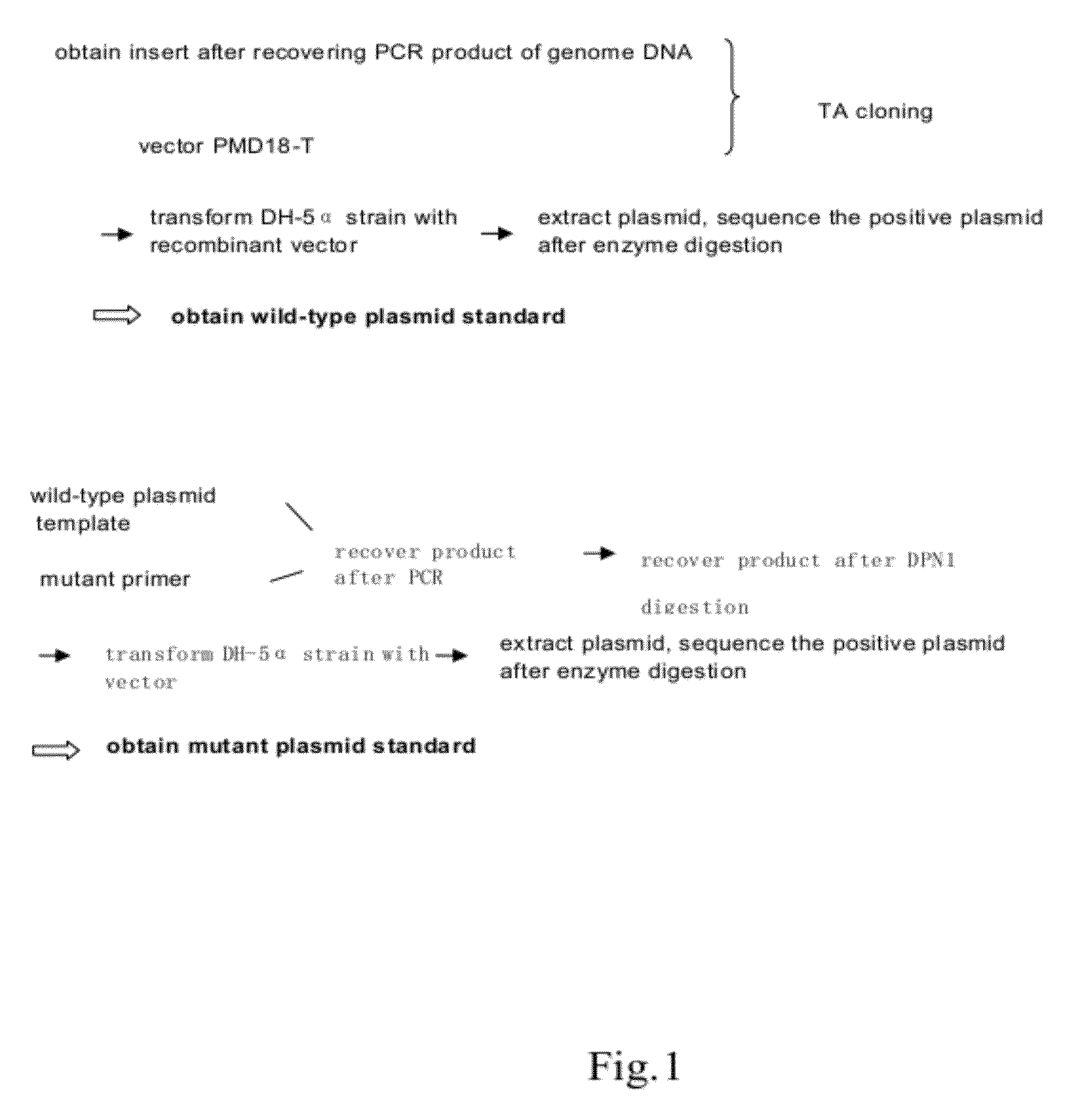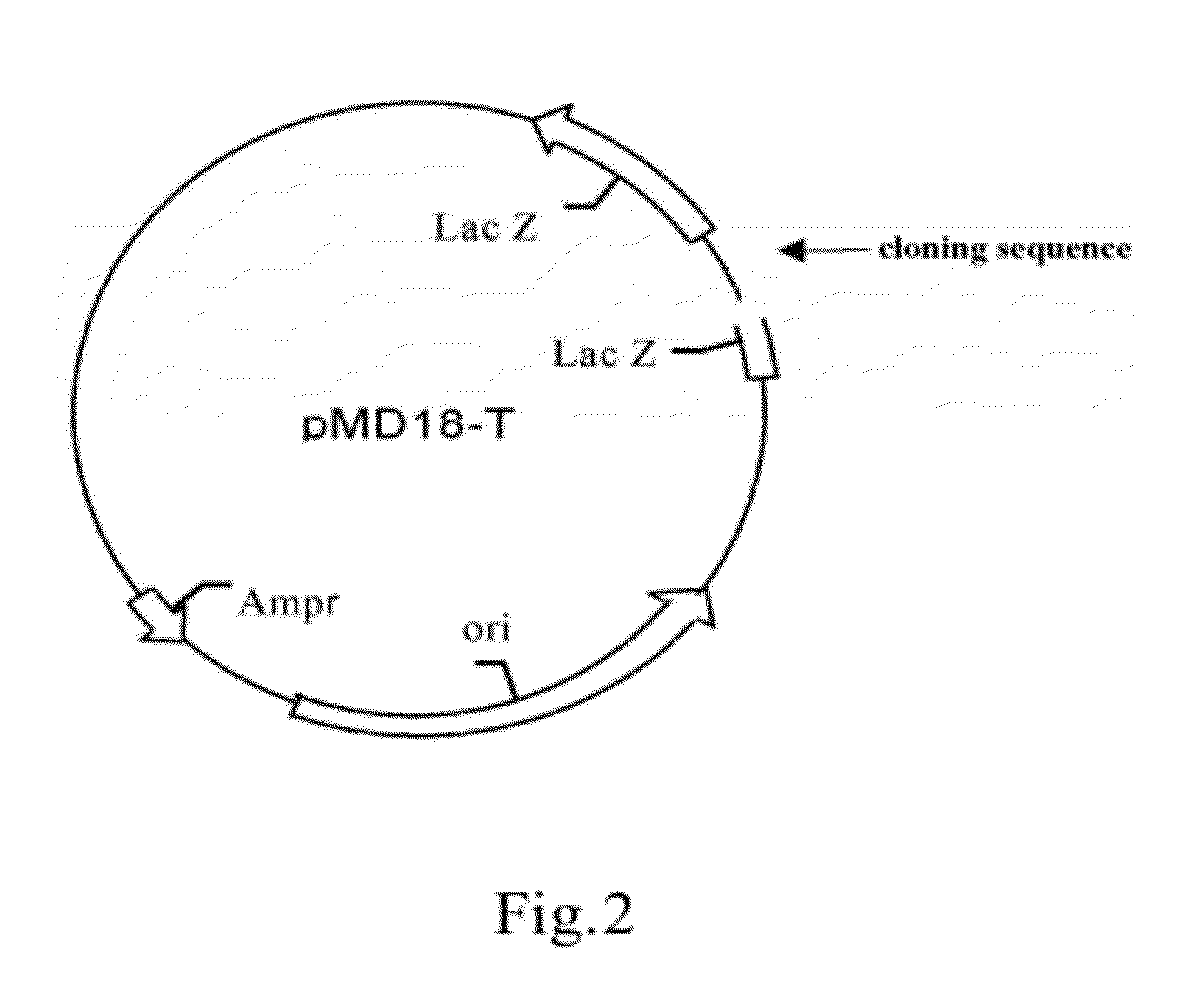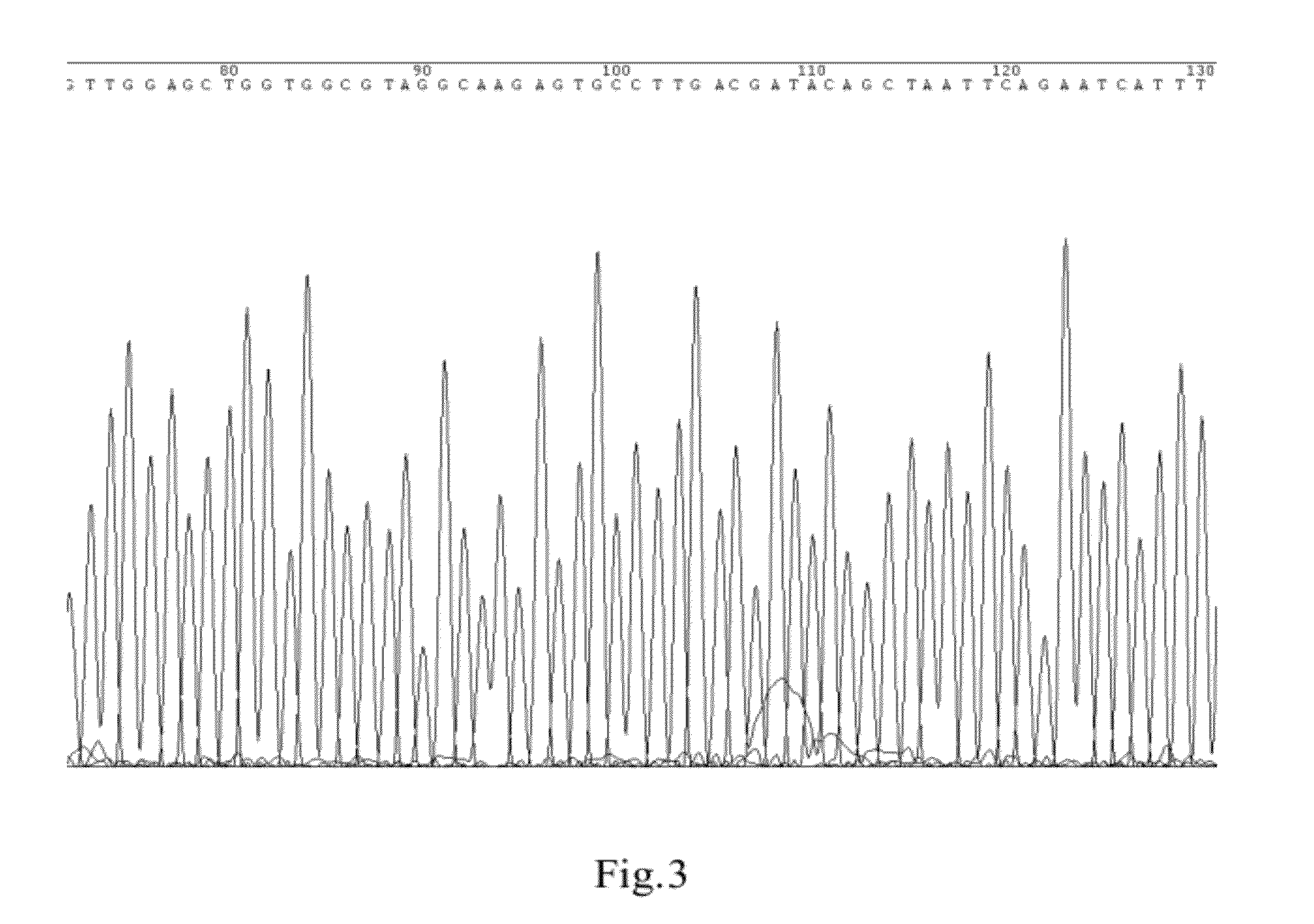Kits for quantitative detection of k-ras mutations
a technology of kras and kras fragments, applied in the field of kras mutation quantitative detection kits, can solve the problems of not producing quantitative, requiring a lot of human labor, and the restriction fragment length polymorphism method, and achieve the effect of accurately and quantitatively determining the ratio of kras mutations
- Summary
- Abstract
- Description
- Claims
- Application Information
AI Technical Summary
Benefits of technology
Problems solved by technology
Method used
Image
Examples
example 1
Extracting Genome DNA from Fresh Human Tumor Tissues, Paraffin Embedded Tissues, Peripheral Blood, Pleural Effusion, and Human Cell Lines
[0027]The tumor cell lines we tested included cell lines of: non-small-cell carcinoma (NSCLC; A549, H460, H838 and H1703), breast cancer (MCF-7, BT474 and HuL100), malignant mesothelioma (H513, H2052, H290, MS-1 and H28), colon cancer (SW480), head and neck cancer (U87), cervical carcinoma (Hela), sarcoma (Mes-SA, Saos-2 and A204).
[0028]The fresh human tumor tissues, peripheral blood, paraffin embedded tissues we tested included: NSCLC, mesothelioma, colon cancer, malignant melanoma, renal carcinoma, esophagus cancer, thyroid carcinoma, malignant cancer and ovarian cancer.
[0029]Extraction of Sample DNA
[0030]DNA extracting kit from Qiagen Inc., Promega Inc., or Roche Inc. can be used to extract genomic DNA from the samples. Content and purity of the extracted DNA can be determined by using Nanodrop ND1000 (Gene Inc.) (OD260 / OD280 is about 1.8, OD260...
example 2
Preparation of the Plasmid Standards Containing Mutant and Wild-Type Sequences
[0085]1. Construction of Wild-Type Plasmids (FIG. 1, FIG. 2)
[0086]1.1 Preparation of the carrier
[0087]TA cloning carrier pMD18-T was purchased from TAKARA Inc.
[0088]1.2 Preparation of the insert
[0089]The insert is prepared using PCR. The template of PCR is the sample genome DNA extracted in Step 1. The reaction system and amplification condition are shown in the following tables (Table 1, Table 2 and Table 3):
TABLE 1PCR reaction system (50 μl)reagentsamount(μl / tube)double-distilled water29.7510x buffer (free of Mg2+)5MgCl2 (25 mM)7.5dNTP (10 mM)1.25upstream primer (25 μM)1.25downstream primer (25 μM)1.25Taq enzyme1DNA template3total volume50
TABLE 2PCR primersnameSequenceK-ras-F1CCTCTATTGTTGGATCATATT(SEQ ID NO: 3)K-ras-F2AATGACTGAATATAAACTTGTGGTAGT(SEQ ID NO: 4)K-ras-R1TGACTGAATATAAACTTGTGGT(SEQ ID NO: 5)K-ras-R2AAATGATTCTGAATTAGCTGTATCGT(SEQ ID NO: 6)
TABLE 3PCR amplification conditionstepcyclestemperature ...
example 3
Detection of K-Ras Mutations from Genome DNA of Human Cell Lines, Human Fresh Tumor Tissues, Peripheral Blood, and Paraffin Embedded Tissues, Using Lung Cancer and Cervical Carcinoma as Examples
[0101]1. The templates for fluorescent quantitative PCR are the genome DNA of lung cancer and cervical carcinoma samples extracted in Example 1, and the standards prepared in Example 2. Double-distilled water is served as negative control. For drawing the standard curves, the standards are diluted as 1 ng / μl, 0.5 ng / μl, 0.25 ng / μl, 0.125 ng / μl. 0.0625 ng / μl, 0.03125 ng / μl.
[0102]2. The reaction system and condition are shown in Table 2, Table 5, Table 6 and Table 7, wherein the fluorescent emission group bound to the probe is selected from FAM, TET, HEX or ROX, the quench group is selected from BHQ or TAMARA.
TABLE 5Reaction system for fluorescent quantitative PCR (20 μl / tube)reagentamount (μl / tube )double-distilled water9.910 × buffer (free of Mg2+)2MgCl2 (25 mM)3dNTP (10 mM)0.5upstream primer...
PUM
| Property | Measurement | Unit |
|---|---|---|
| fluorescent quantitative PCR | aaaaa | aaaaa |
| fluorescence | aaaaa | aaaaa |
| fluorescence emitting | aaaaa | aaaaa |
Abstract
Description
Claims
Application Information
 Login to View More
Login to View More - R&D
- Intellectual Property
- Life Sciences
- Materials
- Tech Scout
- Unparalleled Data Quality
- Higher Quality Content
- 60% Fewer Hallucinations
Browse by: Latest US Patents, China's latest patents, Technical Efficacy Thesaurus, Application Domain, Technology Topic, Popular Technical Reports.
© 2025 PatSnap. All rights reserved.Legal|Privacy policy|Modern Slavery Act Transparency Statement|Sitemap|About US| Contact US: help@patsnap.com



